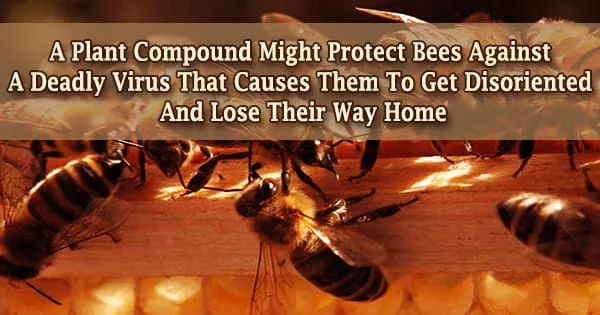Honeybees are dying in enormous numbers all around the world. This mass extinction is caused in part by a fatal virus that can kill bees or make it difficult for them to return to their hives after foraging. Researchers show in a study published in the journal iScience on September 28 that an inexpensive and naturally occurring chemical molecule can prevent or reverse the virus’s effects in bees.
Bees given the compound before being infected were nine times more likely to survive the virus after five days, according to the researchers, who also discovered that bees fed the chemical were more likely to return to the hive at the conclusion of a foraging day by monitoring hives in real-time.
Pathogens are definitely a stressor for bees.
Cheng-Kang Tang
The deformed wing virus, which is spread by a parasitic mite known as a varroa mite, can infect bees at any stage of their life. Infected bees will die within days or will have underdeveloped wings, making it difficult for them to fly and feed.
The previous study has shown that the virus can damage a bee’s capacity to learn and remember, which could impede its ability to return home after a food quest. Because of a shortage of food, lost bees are likely to perish, and their colony may finally collapse.
“Pathogens are definitely a stressor for bees,” says first author Cheng-Kang Tang at National Taiwan University. “But the beekeepers don’t want to use pesticides because of food safety concerns. So, we set out to find some compounds that can increase the strength of bees.”
In bees, the virus reduced the expression of genes involved in nerve signal transmission as well as various other biological processes relevant to learning and memory functions, according to their findings.
Sodium butyrate (NaB), a chemical molecule present in many plants and known to stimulate the expression of a range of genes in animals, including those involved in immunological responses and learning, was discovered as a possible option to protect them.
Yueh-Lung Wu of National Taiwan University and his colleagues studied the effects of NaB on honeybees by feeding them NaB-laced sugar water for a week before infecting them with the deformed wing virus. More than 90% of these bees survived after five days, whereas 90% of sick bees who did not receive NaB perished within the same time period.
“Our findings show that feeding the insects with NaB before virus exposure can counteract the negative impacts of the pathogen,” Wu says. “We also found previously that NaB can upregulate some immune response genes in bees, and this can help suppress viral replication and improve bees’ chances at survival.”
Wu’s group also performed research on a bee farm. For nearly a month, they placed monitors at the entrances of multiple beehives with tens of thousands of foraging bees each to quantify how many bees depart and return home during the day.
Only half of the infected foraging bees managed to return to the hive, according to the researchers. However, after being infected with NaB sugar water, more than 80% of the bees found their way home by the end of the day, which is equivalent to uninfected bees.
“It is a really interesting study because we tested the effect of NaB on bees across different scales, from the genetic level to behaviors in the lab, then in the field under a natural scenario,” Wu says. They also want to see if bees respond to the NaB supplement differently depending on the season, as bees are known to modify their activity throughout the year.
“Sodium butyrate is really cheap. So, if we can prove its benefits, it would be an easy and affordable approach for beekeepers to keep their bees alive.” Wu says.
“Honeybees are vital pollinators of a wide range of fruits and vegetables of economic value across the world, and are thus essential for maintaining ecological equilibrium.”
This work was supported by the Ministry of Science and Technology in Taiwan.





